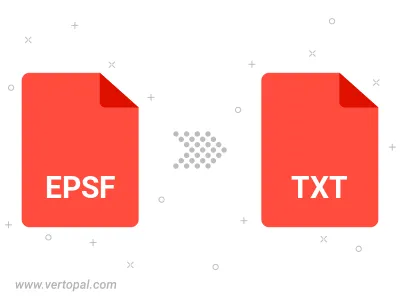Convert EPSF to TXT UILTABLE
Convert EPSF images to TXT UILTABLE format, edit and optimize images online and free.

An EPSF, or Encapsulated PostScript File, is a graphics file format used primarily in the publishing and printing industries for embedding high-resolution images within other PostScript documents. Introduced by Adobe Systems in the late 1980s, EPSF files enable seamless integration of complex visual elements, maintaining quality and device independence. They encapsulate both vector and raster graphics, allowing detailed illustrations and photographs to be embedded without loss of resolution, facilitating professional-quality output across various platforms and devices.
The TXT file extension, associated with the X-Motif UIL Table, stands for Text. This format is used to define user interface elements like menus and buttons within the X Window System. Initially developed by The Open Group, the plain text format allows developers to outline the UI components and their configurations. These files are then compiled into a format that can be utilized by the Motif Resource Management functions, streamlining the creation and management of graphical interfaces.
Select a EPSF image from your computer, or drag & drop it on the page.
For advanced customized conversion, use EPSF to TXT UILTABLE tools and click Convert.
Wait for the converter to finish and download your TXT UILTABLE image.

To change EPSF format to TXT UILTABLE, upload your EPSF file to proceed to the preview page. Use any available tools if you want to edit and manipulate your EPSF file. Click on the convert button and wait for the convert to complete. Download the converted TXT UILTABLE file afterward.
Follow steps below if you have installed Vertopal CLI on your macOS system.
cd to EPSF file location or include path to your input file.Follow steps below if you have installed Vertopal CLI on your Windows system.
cd to EPSF file location or include path to your input file.Follow steps below if you have installed Vertopal CLI on your Linux system.
cd to EPSF file location or include path to your input file.